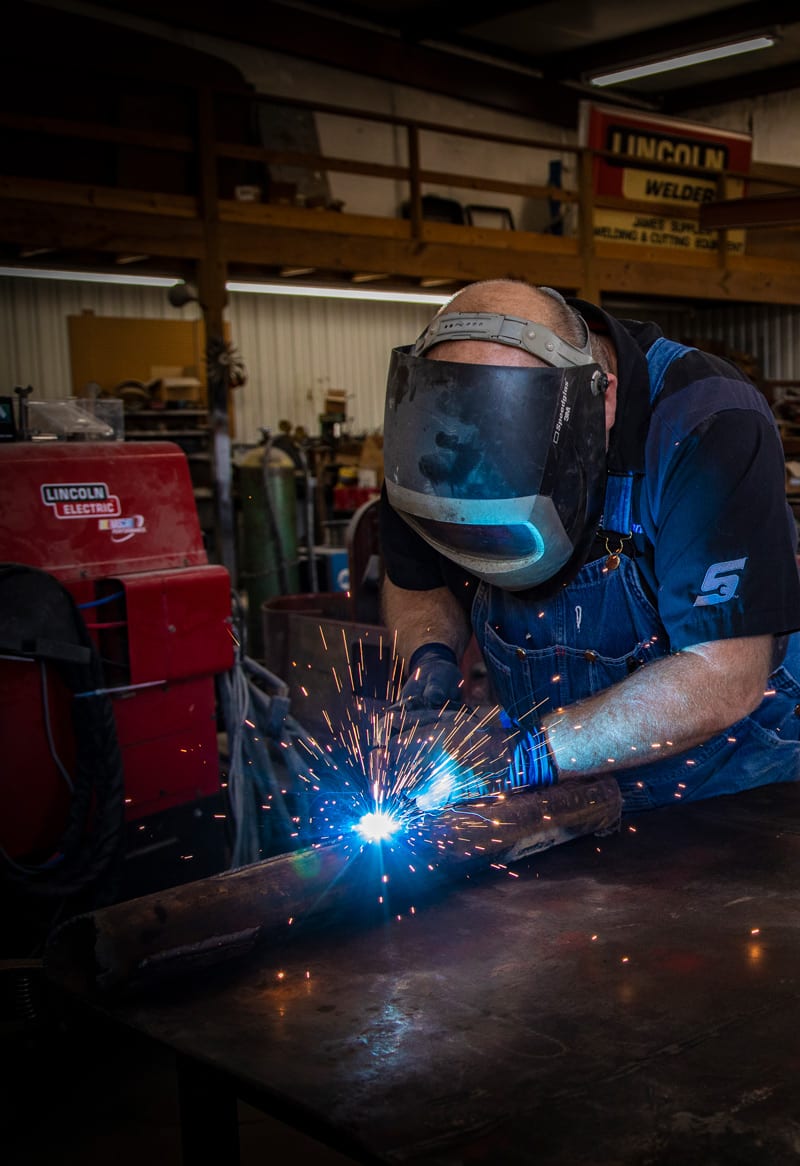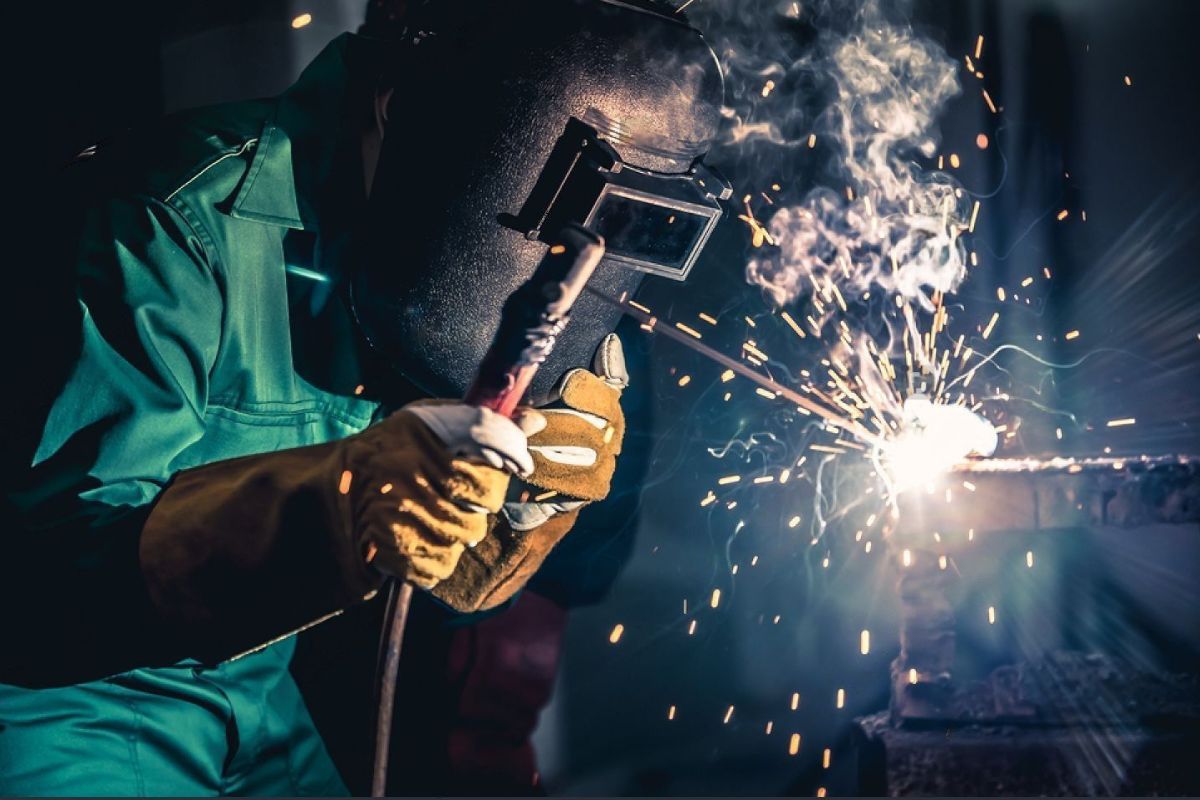Reliable fixes for poor fusion from Montana Mobile Welding and Repair
Wiki Article
Typical Welding Repair Service Issues and How to Address Them Efficiently
Welding fixings typically experience a series of concerns that can threaten the stability of the last product. Typical troubles include poor penetration, porosity, and misalignment, to name a few. Each problem offers special obstacles that need certain methods for resolution. Understanding these issues is necessary for welders intending to boost their results and skills. This discussion will certainly discover these usual welding repair service problems and efficient techniques to address them.Poor Penetration
Inadequate infiltration takes place when the weld metal falls short to completely fuse with the base material, causing weak joints and potential structural failings. This issue frequently originates from not enough warm input, incorrect electrode angle, or improper welding speed. Welders might come across insufficient penetration because of a miscalculation of the needed specifications for a details product thickness or kind. In addition, contamination on the base material's surface area can hinder reliable bonding, aggravating the problem. To attend to inadequate penetration, welders ought to ensure suitable setups on their tools and maintain a clean work surface area. Routine examination of welds is recommended to identify any shortages early, enabling prompt improvements and the avoidance of jeopardized architectural integrity in bonded settings up.Porosity
Porosity is a common defect in bonded joints that shows up as tiny gas bubbles caught within the weld metal. This issue can compromise the integrity of the weld, resulting in decreased stamina and potential failing under tension. Welding. Porosity usually emerges from contamination, moisture, or inappropriate welding methods, which enable gases to leave right into the molten weld pool. To attend to porosity, welders must assure proper surface prep work, preserve a clean workplace, and make use of suitable welding specifications. Furthermore, selecting the ideal filler product and securing gas can alleviate gas entrapment. Routine evaluation and screening of welds can assist recognize porosity early, guaranteeing prompt rehabilitative activities are taken, thus protecting the high quality and reliability of the bonded structureImbalance
Imbalance in welding can arise from various aspects, consisting of improper setup and thermal development. Recognizing the origin is crucial for efficient resolution. A number of adjustment techniques are available to straighten elements and ensure structural integrity.Causes of Imbalance
Welding misalignment commonly comes from a range of underlying issues that can jeopardize architectural integrity. One main cause is improper fit-up of elements before welding, which can lead to spaces and uneven surface areas. Variations in thermal expansion throughout the welding process can likewise result in distortion, particularly if the materials being signed up with have various coefficients of growth. Furthermore, insufficient securing and fixturing may fail to hold elements safely in location, causing movement throughout welding. Poorly maintained devices, including welding equipments and devices, may introduce incongruities in the weld grain, further adding to misalignment. Lastly, operator mistake, coming from insufficient training or experience, can also play a substantial duty in creating misaligned welds.Modification Techniques Readily Available
Attending to misalignment effectively needs a mix of rehabilitative methods customized to the specific issues available. One typical method is using jigs or fixtures to hold components in the correct placement throughout welding, making sure constant positioning. Additionally, pre-heating the materials can help lower distortion and enhance fit-up. For substantial misalignment, mechanical realignment techniques, such as utilizing hydraulic jacks or clamps, can be employed to fix the placement prior to welding. Post-weld warm treatment might additionally be needed to relieve stress and anxieties triggered by misalignment. Lastly, cautious assessment and modification during the setup phase can protect against imbalance issues from becoming substantial problems, promoting a smoother welding procedure and improving overall architectural stability.Distortion
Distortion is a common obstacle in welding that can develop from various aspects, consisting of irregular home heating and cooling. Understanding the sources of distortion is vital for executing effective avoidance strategies. Addressing this problem not only enhances architectural honesty yet also boosts the general high quality of the weld.Root causes of Distortion
When based on the intense warm of welding, products often go through changes that can lead to distortion. This sensation mainly emerges from thermal development and contraction throughout the welding procedure. As the weld area warms up, the product broadens; upon cooling, it gets, which can produce inner stresses. In enhancement, unequal heating throughout a work surface can worsen these tensions, resulting in warping or flexing. The sort of product additionally plays a significant duty; steels with differing thermal conductivity and coefficients of growth might react in a different way, resulting in unpredictable distortions. Poor joint layout and insufficient fixturing can add to imbalance during welding sleeves welding, enhancing the probability of distortion. Comprehending these causes is vital for effective welding repair work and avoidance methods.Prevention Techniques
Effective prevention methods for distortion throughout welding emphasis on controlling warm input and guaranteeing proper joint style. Maintaining a consistent warmth input helps to decrease thermal expansion and tightening, which can bring about distortion. Using strategies such as preheating the workpiece can likewise minimize the temperature level slope, promoting uniform heating. Furthermore, choosing ideal joint layouts, such as T-joints or lap joints, can improve security and reduce anxiety concentrations. Applying appropriate fixturing to secure the workpieces in position further aids in keeping positioning throughout the welding procedure. Staggered welding sequences can disperse warmth extra evenly, preventing localized distortion. By applying these approaches, welders can substantially decrease the probability of distortion and improve the general quality of their welds.Cracking
Fracturing is a typical problem come across in welding fixings, often arising from numerous variables such as inappropriate cooling prices, material option, or inadequate joint preparation. The occurrence of splits can considerably compromise the honesty of the weld, leading to potential failures during operation. To address this problem, welders should first assess the source, guaranteeing that products work and properly selected for the details application. Furthermore, managing the air conditioning price during the welding procedure is vital; quick air conditioning can induce tension and bring about splitting. Appropriate joint design and prep work additionally add to reducing the risk. Applying these strategies can improve weld quality and sturdiness, ultimately minimizing the likelihood of breaking in ended up weldments.
Incomplete Combination
A considerable concern in welding repairs is insufficient blend, which occurs when the weld metal does not properly bond with the base material or previous weld passes - Belgrade Welding. This problem can cause weaknesses in the joint, possibly compromising the honesty of the bonded framework. Variables adding to incomplete blend include not enough warmth input, improper welding technique, and contamination of the surfaces being joined. To address this issue effectively, welders must assure proper pre-weld cleaning and surface area preparation, in addition to change their welding parameters to attain sufficient penetration and combination. Routine assessment throughout the welding process can additionally aid recognize incomplete combination early, permitting timely rehabilitative steps to improve the total quality of the weldOverheating
While welding repairs can improve architectural honesty, overheating presents a substantial difficulty that can lead to product destruction. Excessive warmth during welding can change the mechanical buildings of steels, resulting in minimized get more stamina, boosted brittleness, and warping. This sensation is especially critical in high-stress applications where structural reliability is paramount. Determining getting too hot can involve aesthetic assessments for staining or distortion, as well as keeping an eye on temperature throughout the welding procedure. To alleviate the risks associated with overheating, welders ought to use proper techniques, such as regulating heat input, adjusting travel rate, and utilizing appropriate filler materials. Furthermore, applying pre- and post-weld heat therapies can help bring back material homes and boost the overall high quality of the repair, ensuring long-lasting performance and safety.Regularly Asked Inquiries
What Are the Usual Indicators of a Welding Problem?

Exactly How Can I Test My Welds for Quality?
To check welds for top quality, one can make use of aesthetic evaluations, ultrasonic screening, and radiographic approaches. Each strategy ensures architectural integrity, recognizes issues, and confirms adherence to defined criteria, ultimately boosting the dependability of the bonded joints.What Safety Preventative Measures Should I Take While Welding?
When welding, one need to focus on safety by putting on proper individual safety tools, ensuring correct air flow, protecting combustible materials away, maintaining a clean work space, and recognizing environments to protect against crashes and injuries.Can I Fix a Weld Without Redesigning the Entire Joint?
Repairing a weld without redoing the entire joint is possible, relying on the damage (Belgrade). Methods such as grinding, adding filler material, or utilizing a welding process can effectively resolve details problems while preserving the bordering structureWhat Tools Are Crucial for Efficient Welding Repairs?
Essential tools for reliable welding repairs include a welding maker, cable brush, mill, protective equipment, clamps, and filler materials. Each tool plays a crucial function in ensuring high quality and safety and security throughout the repair work procedure. Porosity commonly arises from contamination, dampness, or inappropriate welding strategies, which allow gases to escape into the liquified weld pool. Badly conserved equipment, consisting of welding devices and tools, might present inconsistencies in the weld bead, additional adding to imbalance. When subjected to the extreme warm of welding, materials typically undertake modifications that can lead to distortion. Breaking is an usual problem run into in welding repair services, typically resulting from numerous aspects such as incorrect cooling rates, material option, or poor joint preparation. A tweco welder considerable problem in welding repair services is insufficient combination, which takes place when the weld steel does not effectively bond with the base material or previous weld passes.Report this wiki page